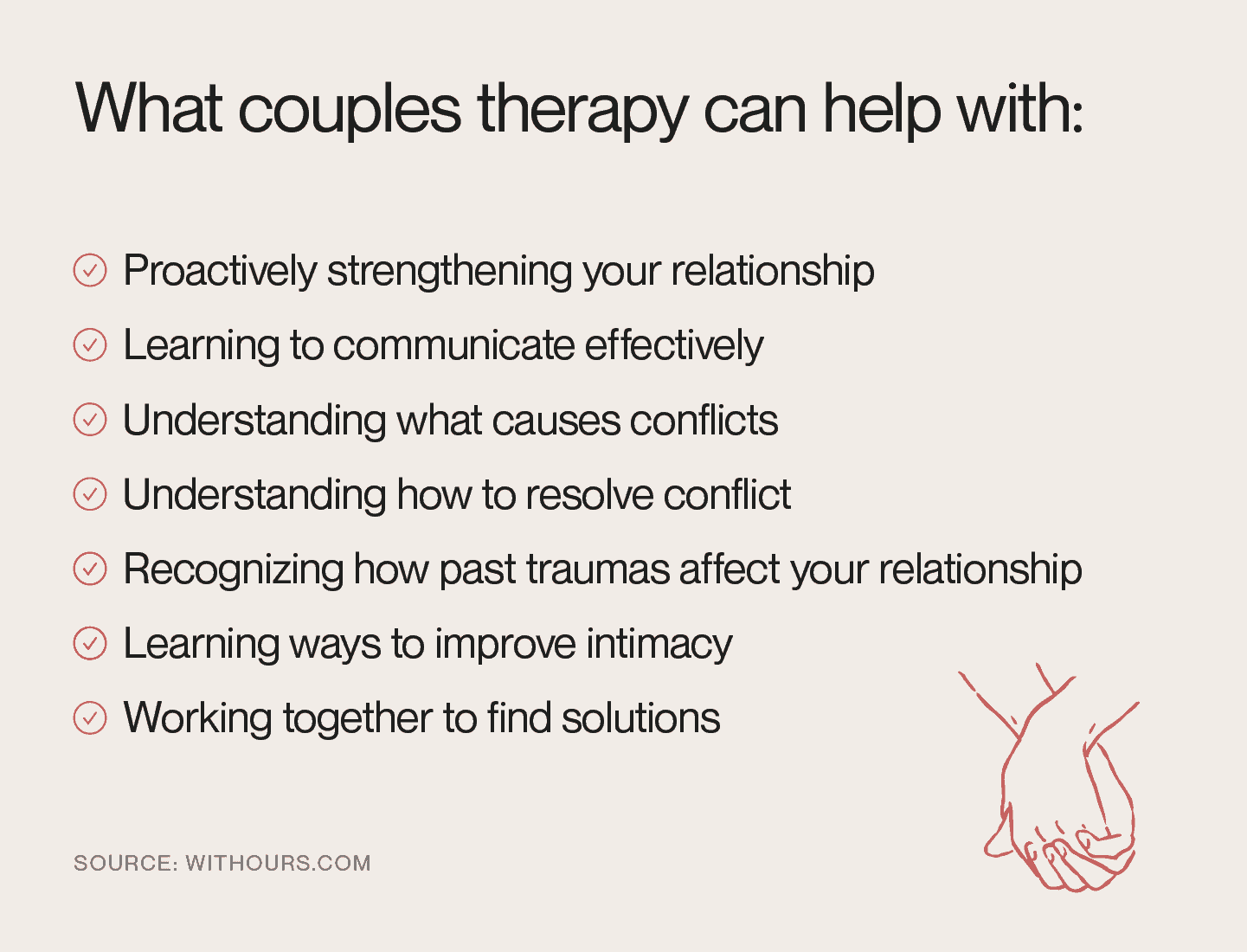The Facts About Aim Point Counseling Uncovered
The Facts About Aim Point Counseling Uncovered
Blog Article
The Ultimate Guide To Aim Point Counseling
Table of ContentsAim Point Counseling Can Be Fun For EveryoneThe smart Trick of Aim Point Counseling That Nobody is DiscussingThe 7-Minute Rule for Aim Point CounselingAim Point Counseling for DummiesThe 25-Second Trick For Aim Point CounselingThe Buzz on Aim Point Counseling
The longitudinal style involves a pre-treatment study and 2 follow-up surveys at 3- and 12-months post-intervention. The study is embeded in 8 Relationships Australia Victoria centres, throughout cosmopolitan, outer suburban areas, and regional/rural websites. Relationships Australia, a non-government organisation, is the largest supplier of pair counselling and connection solutions in Australia.
In Australia, the median size of marital relationship prior to separation is 8.8 years, and approximately fifty percent of all separations include couples with children [1] These high prices of relationship breakdown have actually been consistently related to negative health repercussions for both adults and kids adhering to divorce/separation. These include isolation from assistance networks, and reduced revenue and criterion of living for both grownups and youngsters [3], dilemmas of loyalty over kids for males, and depression and loss of identity for females [4,5]
The Aim Point Counseling Statements
The effects of divorce and separation can be detrimental, research suggests that high connection discord in undamaged pairs is likewise likely to have adverse results.
Research to date has actually identified both couple and individual factors that may contribute to partnership dissonance. These include partnership complete satisfaction and commitment at the couple level, and anxiety at the individual degree.
Aim Point Counseling for Beginners
While the majority of studies suggest enhancements in partnership complete satisfaction following couple counselling, they are restricted by the samples and steps made use of, largely temporary follow-up time structures, and evaluations that do not account for the dyadic nature of couple data., is an additional frequently explored relationship outcome.
To sum up, research suggests that couple-specific variables along with private factors may anticipate the end results of couple coaching and relationship solutions. The causal direction of these relationships, nonetheless, is much less clear. These observations are necessary, given that, to validate and assist the application of partnership services such as couple therapy, empirical proof has to explore both the results of partnership services and the factors that predict successful treatment.
, at least in some European countries.

We presently understand little about the profiles of couples that seek out relationship education and learning compared with those that seek relationship counselling, or the outcomes of these programs. Unscientific evidence recommends that there might be significant distress among at the very least some couples seeking partnership education and learning.
Some Known Questions About Aim Point Counseling.
Responses includes participants completing surveys regarding their partnership (e.g. steps of interpersonal issues), and getting information on what their scores show. Cognitive-behavioural techniques advertise changing cognitions to facilitate positive partnerships. These might include advertising sensible attributions/expectations around negative companion behaviour [46] In abilities training, couples go to talks or discussions on connection skills, and practice these throughout facilitator-led activities [ 45]
These meta-analyses highlight constraints in the present literature on partnership education. This example profile might not stand for clients that typically present for partnership education and learning.
Rumored Buzz on Aim Point Counseling

Very little research has actually analyzed the relative advantages of pair therapy and partnership education programs. As clients are most likely to self-select into these service types, it is unclear whether particular connection distress accounts present per Get More Information solution kind, or without a doubt whether there is a communication in between presenting account, service type and result.
(https://www.reverbnation.com/artist/a1mpoint)
Hence, we have actually consisted of a 12-month follow-up to determine longer-term patterns and results. The research makes use of a number of standardized outcome steps since some prior examinations have been criticised for their absence of standard assessment [50] Finally, making use of analytical analyses that assume independence of data, such as t-tests, or ANOVAs, has actually been widespread in previous studies [ 44,49]
We suggest to utilise multi-level statistical modelling treatments that manage for the inter-dependence of pair data to examine any type of therapy impacts. The certain goals of the ECC study are to: 1. Map accounts of clients looking for area agency-based couple coaching vs. partnership enhancement programs in regards to socio-demographic and relationship indicators (such as connection fulfillment, relationship dedication, interpersonal problems, and reasons for attending), in addition to wellness (such as anxiety, general health and wellbeing) and health solution use (eg.
Establish whether couple therapy and partnership education and learning services boost 3- and twelve-month end results for connection contentment, commitment, and depression, making use of statistical analyses appropriate to combine data. male counselor. Figure out the loved one payments of client aspects (specific and pair) and therapy/education variables to results at 3- and 12-months, and to sustainability of outcomes over time.
The Single Strategy To Use For Aim Point Counseling
Multi-level modelling to establish pre-post distinctions, regulating for dyadic (couple) level. To add to the literary works analyzing the efficiency of community-based couple therapy. The results will aid scientific decision-making in community-based relationship service setups, and expert training. 3. To identify the family member contributions of client/couple and therapy factors to outcomes at 3- and 12-months, and to sustainability of outcomes over time.
Report this page